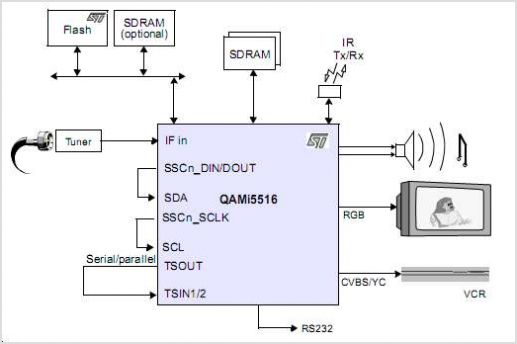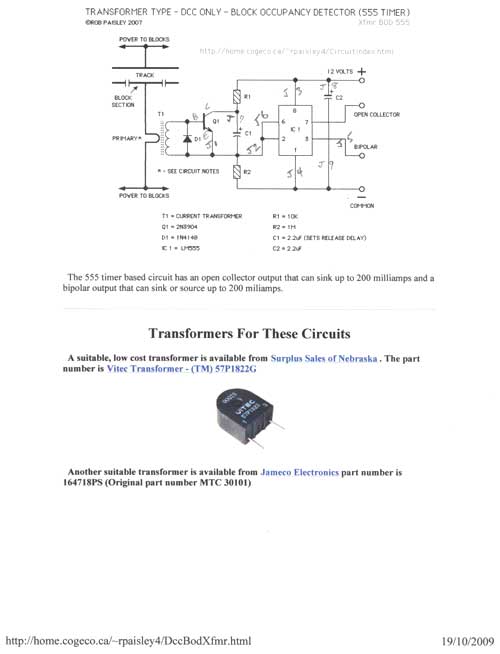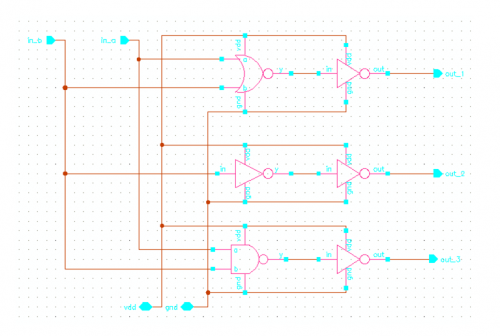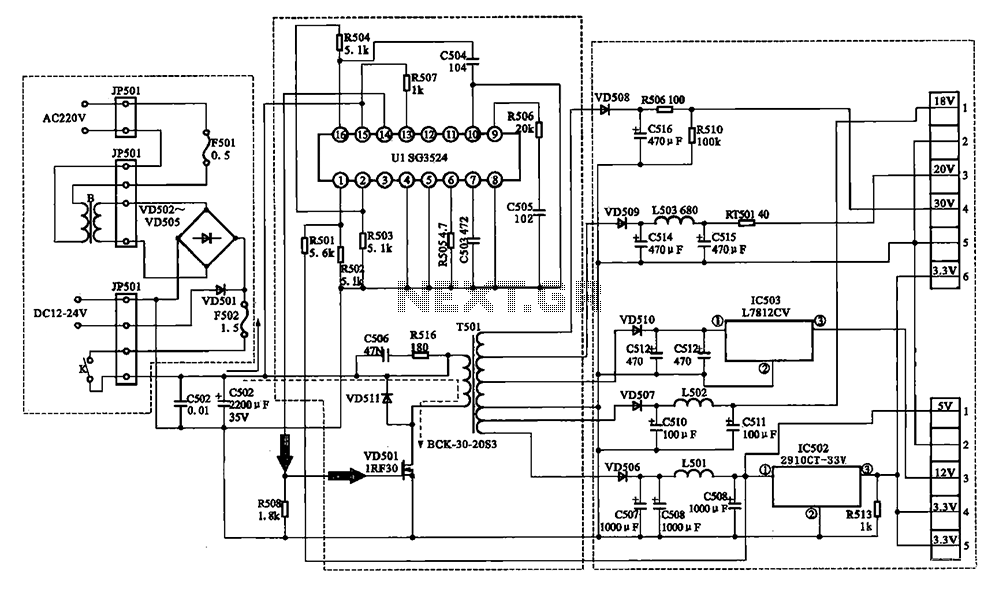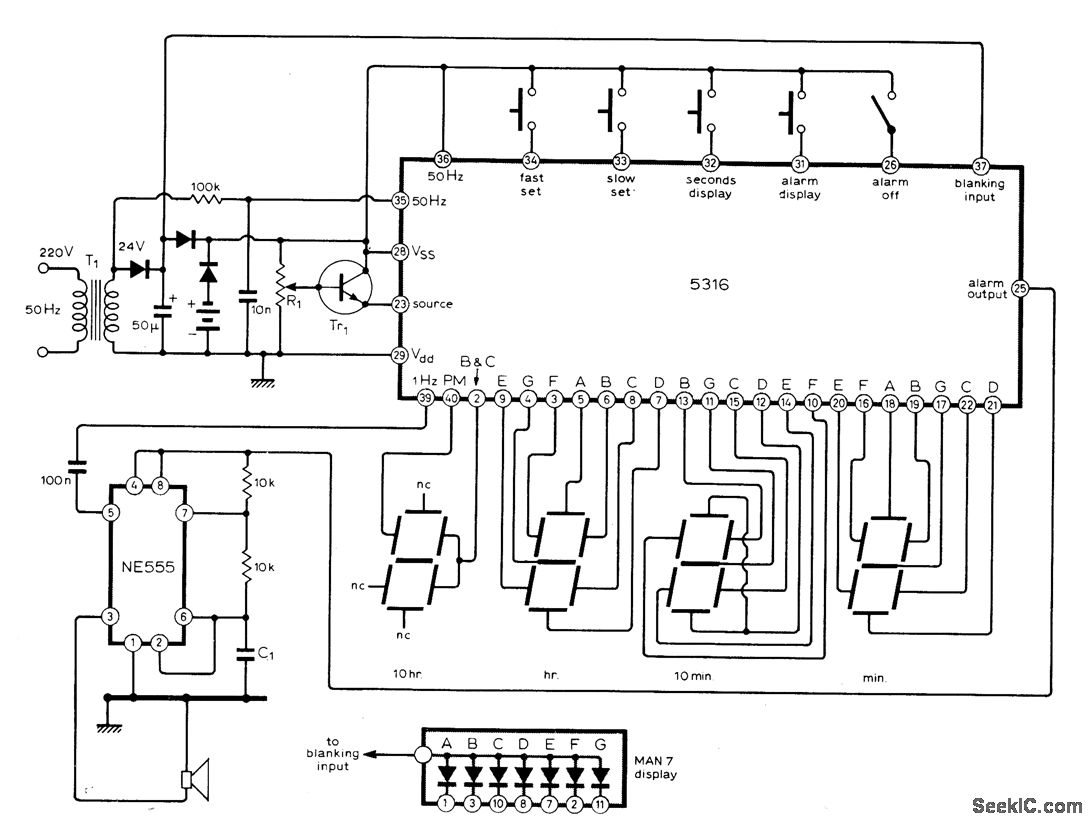
Converting an analogue signal to a digital signal
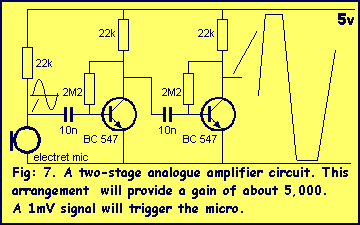
This chapter shows how to connect an analogue signal to a PIC. An analogue signal is similar to a sine wave and is generally less than 5v (5,000mV) in amplitude. Low-level signals are generally expressed in mV, to make them instantly recognisable and easy to talk about.
To connect an analogue signal to a PIC (Peripheral Interface Controller), a suitable interface circuit is required to ensure accurate signal processing and compatibility with the microcontroller's input specifications. The following outlines the essential components and considerations for designing this interface.
1. **Signal Conditioning**: The analogue signal, which may vary in amplitude and frequency, often requires conditioning to fit within the input range of the PIC. This may involve amplification, filtering, and level shifting. An operational amplifier (op-amp) can be used to amplify low-level signals, ensuring they are within the acceptable input range of the PIC's analogue-to-digital converter (ADC).
2. **Voltage Reference**: The PIC typically has a specified reference voltage for its ADC, which is usually set to the maximum input voltage that can be accurately measured. If the analogue signal exceeds the reference voltage, it can lead to saturation and inaccurate readings. A voltage divider can be employed to scale down higher voltage signals to the appropriate level.
3. **Filtering**: To eliminate noise and ensure that only the desired frequency components of the signal are processed, a low-pass filter can be implemented. This filter can be constructed using passive components (resistors and capacitors) or active components (op-amps).
4. **Protection Circuitry**: To protect the PIC from over-voltage situations, it is advisable to include clamping diodes or a transient voltage suppressor. This prevents damage to the microcontroller in cases of unexpected voltage spikes.
5. **Connection to the PIC**: The conditioned analogue signal is then connected to one of the ADC input pins of the PIC. It is vital to ensure that the ground of the signal source is common with the ground of the PIC to avoid ground loop issues, which can introduce errors in the measurements.
6. **Software Configuration**: The PIC's firmware must be configured to read the analogue signal. This involves setting the appropriate ADC channel, configuring the ADC clock, and implementing the necessary code to sample and convert the analogue signal into a digital value for processing.
By carefully designing the interface circuit with these considerations, accurate and reliable analogue signal processing can be achieved, enabling effective interaction between the analogue world and the digital capabilities of the PIC microcontroller.his chapter shows how to connect an analogue signal to a PIC. An analogue signal is similar to a sine wave and is generally less than 5v (5,000mV) in amplitude. Low-level signals are generally expressed in mV, to make them instantly recognisable and easy to talk about. 🔗 External reference
To connect an analogue signal to a PIC (Peripheral Interface Controller), a suitable interface circuit is required to ensure accurate signal processing and compatibility with the microcontroller's input specifications. The following outlines the essential components and considerations for designing this interface.
1. **Signal Conditioning**: The analogue signal, which may vary in amplitude and frequency, often requires conditioning to fit within the input range of the PIC. This may involve amplification, filtering, and level shifting. An operational amplifier (op-amp) can be used to amplify low-level signals, ensuring they are within the acceptable input range of the PIC's analogue-to-digital converter (ADC).
2. **Voltage Reference**: The PIC typically has a specified reference voltage for its ADC, which is usually set to the maximum input voltage that can be accurately measured. If the analogue signal exceeds the reference voltage, it can lead to saturation and inaccurate readings. A voltage divider can be employed to scale down higher voltage signals to the appropriate level.
3. **Filtering**: To eliminate noise and ensure that only the desired frequency components of the signal are processed, a low-pass filter can be implemented. This filter can be constructed using passive components (resistors and capacitors) or active components (op-amps).
4. **Protection Circuitry**: To protect the PIC from over-voltage situations, it is advisable to include clamping diodes or a transient voltage suppressor. This prevents damage to the microcontroller in cases of unexpected voltage spikes.
5. **Connection to the PIC**: The conditioned analogue signal is then connected to one of the ADC input pins of the PIC. It is vital to ensure that the ground of the signal source is common with the ground of the PIC to avoid ground loop issues, which can introduce errors in the measurements.
6. **Software Configuration**: The PIC's firmware must be configured to read the analogue signal. This involves setting the appropriate ADC channel, configuring the ADC clock, and implementing the necessary code to sample and convert the analogue signal into a digital value for processing.
By carefully designing the interface circuit with these considerations, accurate and reliable analogue signal processing can be achieved, enabling effective interaction between the analogue world and the digital capabilities of the PIC microcontroller.his chapter shows how to connect an analogue signal to a PIC. An analogue signal is similar to a sine wave and is generally less than 5v (5,000mV) in amplitude. Low-level signals are generally expressed in mV, to make them instantly recognisable and easy to talk about. 🔗 External reference
